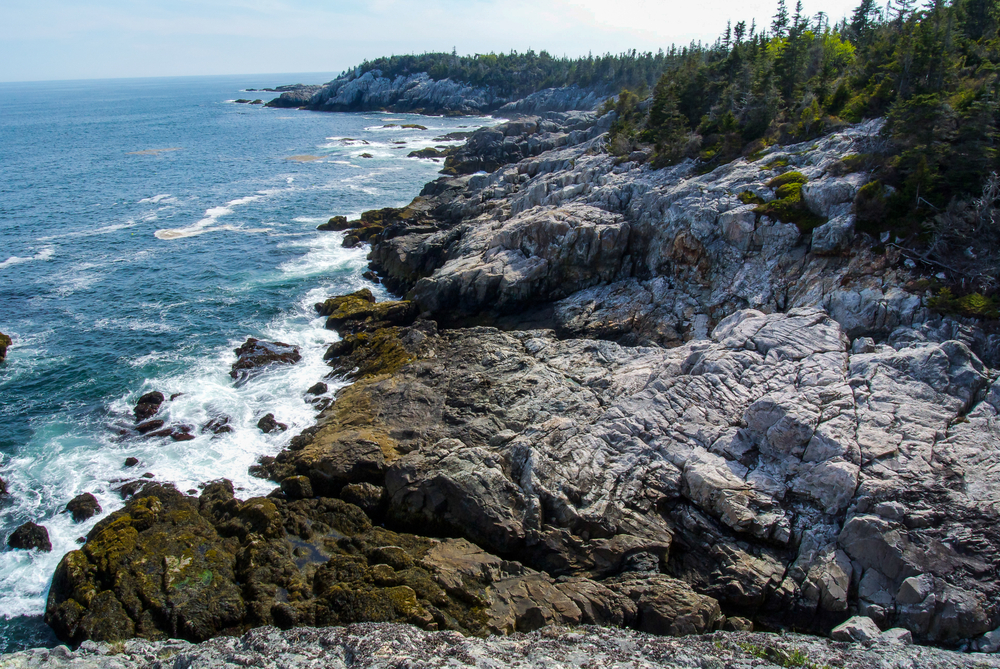Living on an island forces one to be an innovator in ways large and small. For the 50 or so year-round residents of Isle au Haut, an island off the coast of Maine, innovation can look like using PVC pipe as a curtain rod because there are no real curtain rods at hand — or it can look like the future of the nation’s electrical grid.
The 6-mile-long by 2-mile-wide island has been facing disruption of its electricity supply. So the islanders, as they do every day, got creative — and in the process integrated technology that’s been available for decades with emerging innovations to create what could be a renewable energy model for the rest of the United States and perhaps the world.
Isle au Haut gets electricity via underwater cable from the mainland, about 7 miles away. But that cable, painstakingly installed along the ocean floor by a local lobsterman in 1983, has surpassed its estimated lifespan by almost double and could fail at any time.
If the cable fails, the island can run its backup diesel generator, but that would triple the cost of electricity for residents, says Jim Wilson, president of Isle au Haut Electric Power Company. “It would be an economic disaster,” he says.
What’s more, using the diesel generator as the island’s main electricity source also would require more maintenance and is not climate-friendly.
Five years ago, knowing the islanders were living on borrowed time, the electricity company board began researching options. Among them: creating a microgrid for the island, which would be independent from the mainland power utility company.
To go the microgrid route, they would have to be able to generate power on the island. For that, they considered microturbines, refrigerator-sized devices that burn fuel to generate electricity. They also looked at wind turbines and solar. A solar microgrid, says Wilson, penciled out at a fraction of the cost of all the other options, including replacing the cable.
So solar it was. With the support of islanders, the power company is getting ready to install a renewable microgrid energy system this summer, which includes a 300-kilowatt solar array of 900 panels.
Getting this project to the launch-point has been “an adventure,” Wilson says. When one tricky situation was solved, another one popped up.
Among the many challenges they faced was one everyone interested in converting to more renewable energy such as solar or wind has to tackle: storing intermittently produced energy for later use. One of the most common storage solutions are lithium-ion batteries, but they were not well suited for the island’s project for a number of reasons, including cost and anticipated lifetime.
After examining several other storage options, the power company settled on supercapacitors built by New York–based Kilowatt Labs, a power management company. Supercapacitors are electronic devices that store and release energy at a rapid rate without degrading the way typical batteries do, says Kilowatt Labs’ chairman, co-founder and managing director, Chip Seibert.
The island’s solar-powered electrical microgrid will have one megawatt-hour of storage in supercapacitors housed in two, 20-foot containers resembling trailers. Kilowatt Labs is also providing a power management system housed in a 10-foot container that channels the power to and from the microgrid.
With storage figured out, the island’s electricity company then faced the issue of a huge seasonal discrepancy in the amount of electricity needed. The island’s population increases from around 50 to between 250 and 300 people in the summer. To meet the electricity demand of the summer months, the island needs a larger energy system. In the non-summer months, this larger system produces more electricity than is used.
While the cable is still functioning, the island’s electricity company can sell that excess power to the utility company on the mainland. But once the cable fails, any electricity produced beyond what can be stored in the supercapacitors essentially will be wasted.
The solution? Installing air-to-water heat pump heating systems in residential, municipal and commercial properties on the island to transform the excess electricity into hot water that then can be used to heat buildings, currently heated with sources ranging from wood to oil to kerosene.
No one expects that every property owner on the island will convert their heating systems to the heat pump/hot water tank system, says Molly Siegel, an on-island fellow of the Island Institute, a Maine-based nonprofit that advocates for and works with the state’s island and coastal communities. The systems, Siegel says, are expected to cost around $9,000 installed, a steep outlay for most year-round islanders. But those who do can expect substantial savings in heating costs.
Read more


